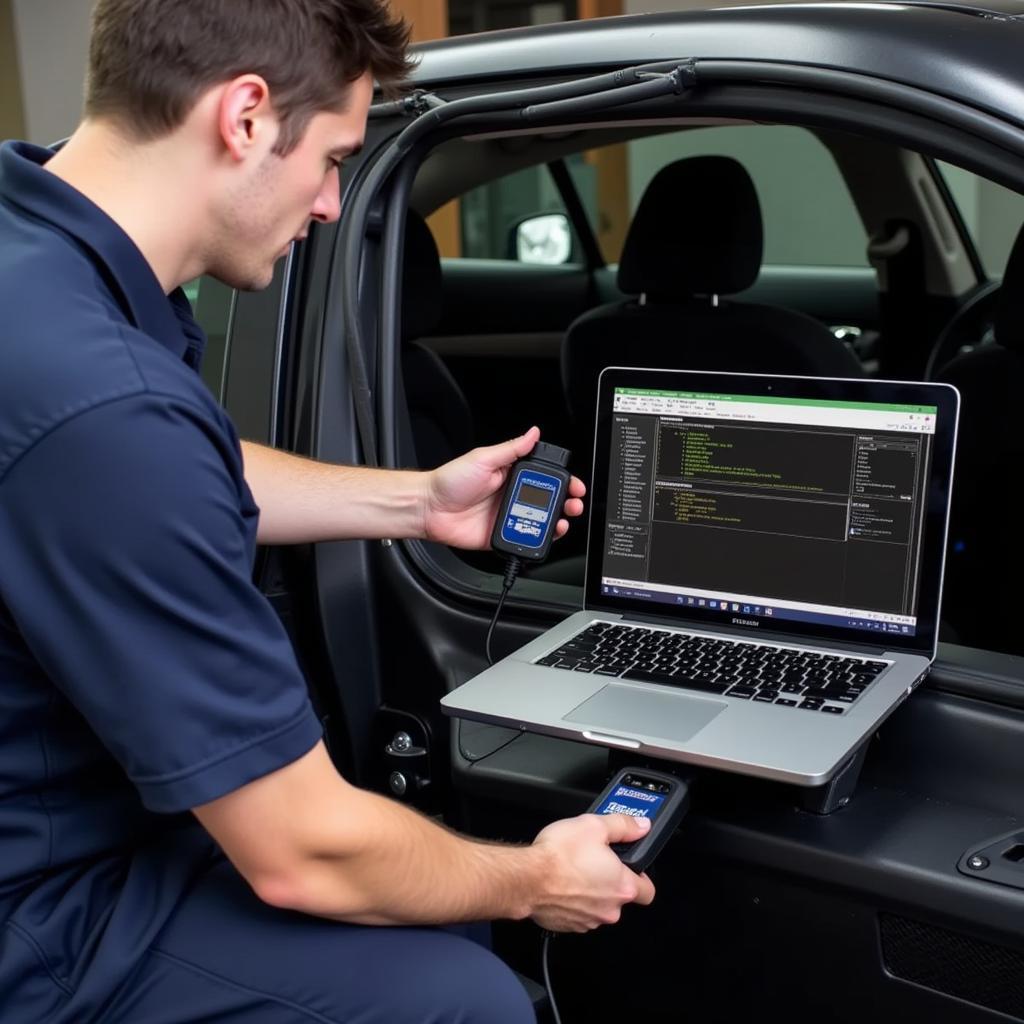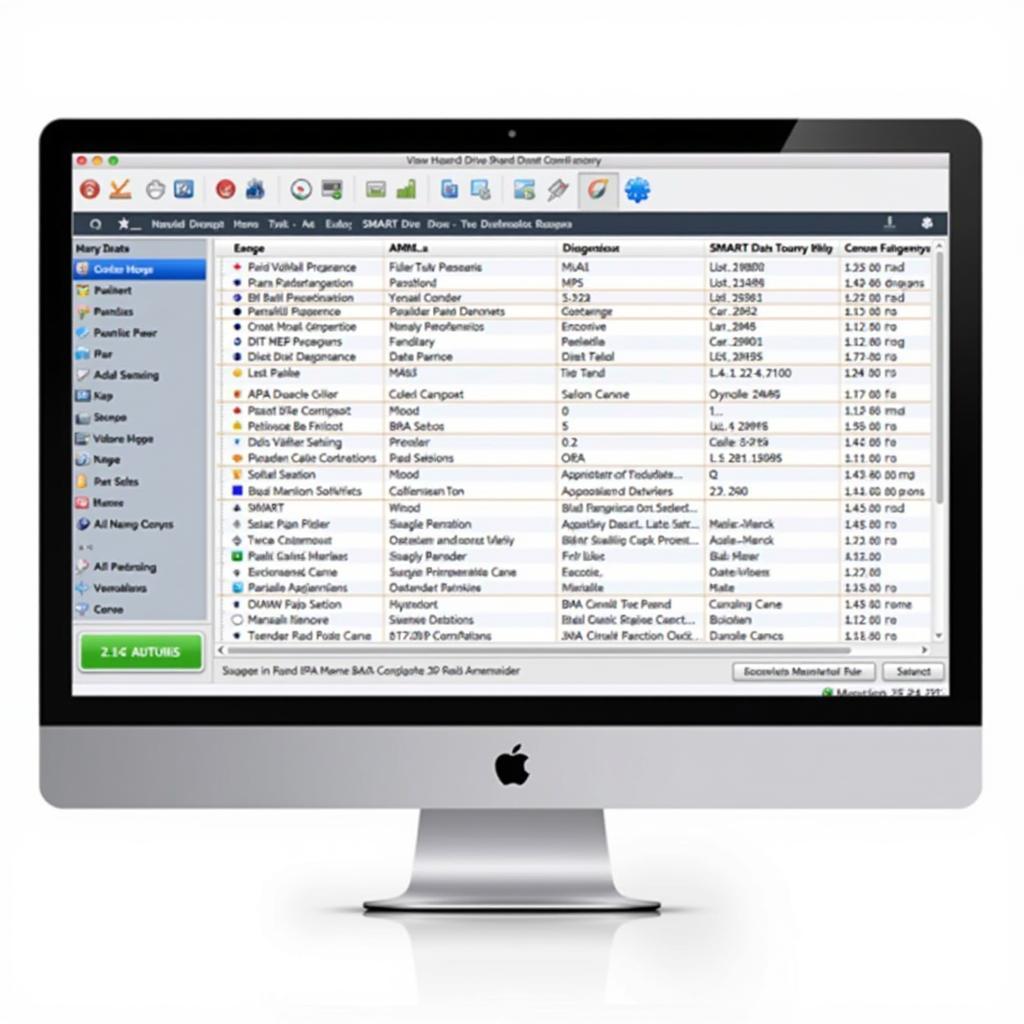New Diagnostic Tools For Hearing Loss are transforming how audiologists assess and treat patients. These advancements offer unprecedented accuracy, speed, and personalized approaches to diagnosing and managing hearing health. This article explores the latest innovations in hearing loss diagnostics, empowering both patients and professionals with knowledge to make informed decisions.
Understanding the Importance of Early Diagnosis
Early detection of hearing loss is crucial for preserving quality of life. Undiagnosed hearing loss can lead to social isolation, communication difficulties, and even cognitive decline. Thankfully, new diagnostic tools are making early and accurate detection more accessible than ever.
Types of Hearing Loss and Diagnostic Approaches
Different types of hearing loss require specific diagnostic approaches. Conductive hearing loss, often caused by issues in the outer or middle ear, can be differentiated from sensorineural hearing loss, which stems from problems in the inner ear or auditory nerve. New diagnostic tools are able to pinpoint the exact location and nature of the problem, leading to more effective treatment plans.
Exploring New Diagnostic Tools for Hearing Loss
The field of audiology has seen remarkable progress in recent years, with the introduction of innovative diagnostic tools. These tools offer more comprehensive and precise assessments compared to traditional methods.
Advanced Audiometry Techniques
Traditional pure-tone audiometry remains a cornerstone of hearing assessments, but new variations offer more detailed insights. High-frequency audiometry assesses hearing at frequencies above the standard range, which can be particularly useful in detecting early signs of noise-induced hearing loss. Speech-in-noise tests evaluate how well individuals understand speech in challenging listening environments, reflecting real-world communication challenges.
Otoacoustic Emissions (OAEs)
OAEs are faint sounds produced by the inner ear in response to sound stimulation. These emissions can be measured using sensitive microphones and provide valuable information about the health of the inner ear, particularly the outer hair cells. OAE testing is particularly useful in newborn hearing screenings and identifying early signs of hearing damage.
Auditory Brainstem Response (ABR)
ABR measures the electrical activity of the auditory nerve and brainstem in response to sound. It provides a detailed assessment of the auditory pathway and can help identify the location of any abnormalities. ABR is particularly valuable in diagnosing auditory neuropathy, a condition where the auditory nerve is damaged but the inner ear functions normally.
Imaging Technologies
Advanced imaging technologies, such as MRI and CT scans, are playing an increasingly important role in diagnosing hearing loss. These scans can provide detailed images of the inner ear and surrounding structures, helping to identify anatomical abnormalities or tumors that may be affecting hearing.
The Benefits of New Diagnostic Tools
These advancements in diagnostic tools offer several benefits:
- Increased Accuracy: New tools provide more precise and reliable measurements, leading to more accurate diagnoses.
- Early Detection: Early identification of hearing loss allows for timely intervention and better management.
- Personalized Treatment: Detailed diagnostic information enables audiologists to tailor treatment plans to individual needs.
- Improved Patient Outcomes: Early and accurate diagnosis contributes to improved hearing outcomes and enhanced quality of life.
New Diagnostic Tools for Hearing Loss: The Future of Audiology
“The future of audiology is bright,” says Dr. Emily Carter, a leading audiologist at the University of California, San Francisco. “These new diagnostic tools empower us to provide more effective and personalized care for our patients.” These advancements are not just improving diagnosis but are also paving the way for more targeted and effective treatments for hearing loss.
Conclusion
New diagnostic tools for hearing loss are revolutionizing how we understand and manage hearing health. From advanced audiometry techniques to sophisticated imaging technologies, these innovations are transforming the field of audiology. By empowering both patients and professionals with these tools, we can ensure better hearing outcomes and improved quality of life for individuals with hearing loss. For further assistance or to explore the latest diagnostic equipment, connect with ScanToolUS at +1 (641) 206-8880 or visit our office at 1615 S Laramie Ave, Cicero, IL 60804, USA.
FAQs
-
What is the most common type of hearing loss? Sensorineural hearing loss is the most common type, typically caused by damage to the inner ear or auditory nerve.
-
How often should I have my hearing checked? It’s recommended to have a baseline hearing test by age 50, and more frequently if you experience any changes in your hearing.
-
Are these new diagnostic tools covered by insurance? Coverage varies depending on the specific test and your insurance plan. Check with your provider for details.
-
Are there any risks associated with these new diagnostic tools? Most diagnostic tests for hearing loss are non-invasive and pose minimal risks.
-
Where can I find a qualified audiologist to perform these tests? You can search for licensed audiologists in your area through professional organizations like the American Academy of Audiology.
-
What are the signs of hearing loss I should look out for? Common signs include difficulty hearing in noisy environments, asking people to repeat themselves frequently, and turning up the volume on electronic devices.
-
What should I expect during a hearing evaluation using these new tools? Your audiologist will explain each test and answer any questions you have. The tests are generally painless and comfortable.


